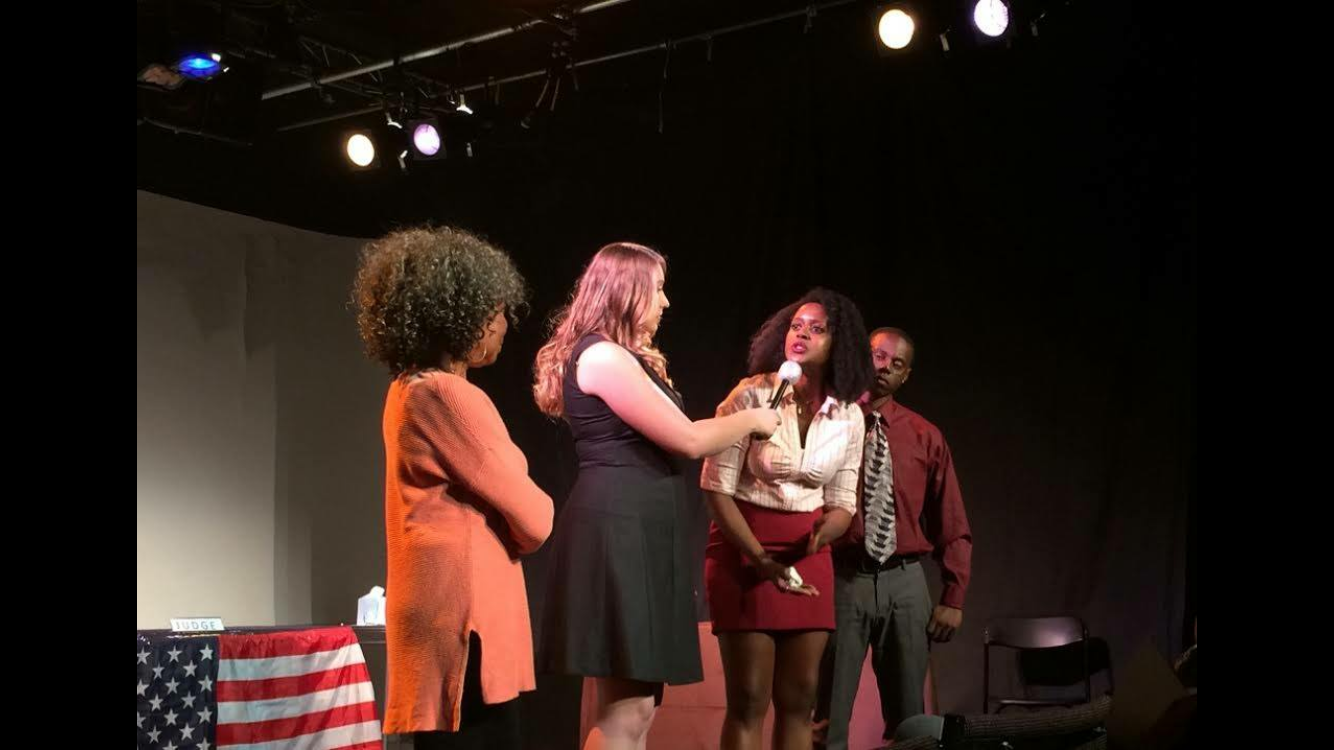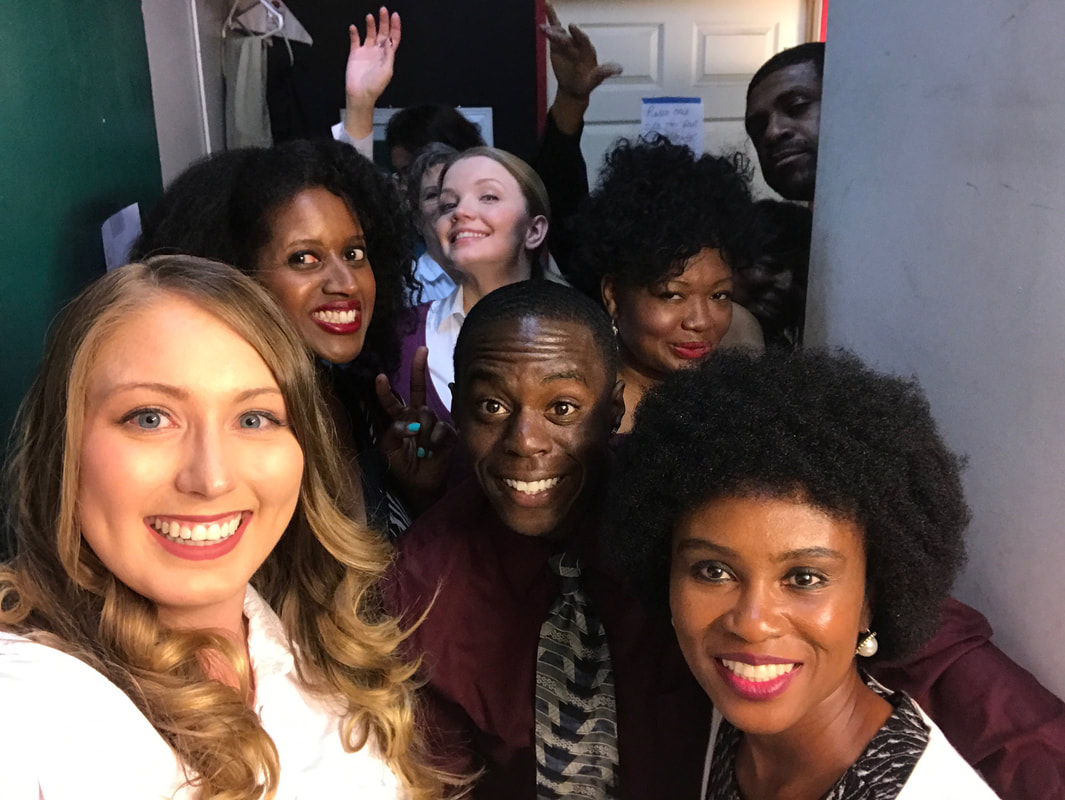Squires performed two roles in the project: that of Bailiff and Court Reporter. As the Court Reporter , she opened the play stating the facts to the judge and jury, and most importantly setting the scene for the audience of what was about to happen. This role required clarity as well as comedic timing. Legal jargon can be confusing both to the listener and the speaker and Karlee notes that, like medical “speak”, it can be quite unusual to memorize and deliver as if it’s second nature. Her character was constantly present in the scene even when not speaking, sometimes taking notes and then asking questions. Because she would close out the play by interviewing the plaintiff and the defendant, this role saw Karlee as the proxy for the audience in encapsulating a great deal of the statements and action of the play. The Bailiff role gave an opportunity for Squires to perform with a lighter side. The Bailiff’s main job in the show was to have comedic facial expressions, prompting the audience to respond. Having very good comedic timing was paramount. The Bailiff didn’t say much other than ushering in the characters, introducing them to the audience, and getting the characters to swear in but the Bailiff was on stage during the entire play. As the Bailiff, Karlee would react to what other characters were doing. For example, when the husband started dancing, it was her job to stop him and calm down the room. When the ex-wife started lunging at the husband to strangle him, Squires was there to save the day. The Bailiff was a crucial role to the plot, even with few lines said. These less dialogue centered roles can be quite challenging as they are dependent on non-verbal cues and intonations. Anyone who has been unable to speak and still communicate in a social setting has an appreciation for the skills required in this type of role.
The well-groomed, well-dressed talkative court reporter was the polar opposite of the no nonsense, conservative Bailiff; it’s an aspect that greatly attracted this actress. She tells, “The manner of dress of these two characters was very different and that always helps an actor get more into the role as well as gives the audience a step towards believability of them. What I was most attracted to was the opportunity to play two very different types of people in the same production. These two people live and work in the same world day after day yet their purpose and status in the courtroom demands that they conduct themselves very differently. In my interpretation, they enjoy their manner of conduct in their professional lives. It speaks to them and they are comforted by it. It’s not something they ‘must’ do, it’s something they ‘want’ to do.”
One of the great responsibilities Karlee had in this production is that she was the audience’s first and last connection with the cast and the story. This meant that she set the tone for both the story and the audience’s reception of this, a fact that she was keenly aware of. Squires delivered the opening monologue to introduce the action as well as the closing monologue to resolve what they had seen. It’s an indicator of the writer/director’s belief in this actress that she allowed her to have the first and last word of her creation. For Karlee, the experience with Shaw was unique and rewarding as she explains, “Working with Shalonda, who was the playwright and director of this show, was an incredible experience. This was the first time I worked in a production where the director was also the playwright. She knew what she wanted from the actors and worked to achieve the clear vision in her head from them. This was truly her creation and the fact that she wrote it and directed us made the process easier in terms of communication.” Both Karlee Squires and Sholanda Shaw are proof that many of the professionals in the theater world are multitalented and this production is yet another indicator of this.


 RSS Feed
RSS Feed
